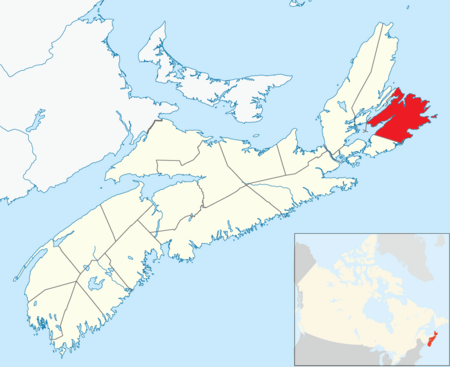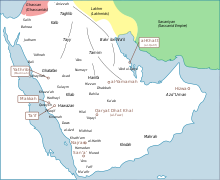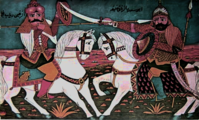Banu Hilal
| |||||||||||||||||||||||
Read other articles:

For the fortress, see Fortress of Louisbourg. Place in Nova Scotia, CanadaLouisbourgLouisbourg HarbourLouisbourgLocation of Louisbourg, Nova ScotiaCoordinates: 45°55′N 59°59′W / 45.917°N 59.983°W / 45.917; -59.983CountryCanadaProvinceNova ScotiaMunicipalityCape Breton Regional MunicipalityEnglish settlement1769Incorporated Town1901Amalgamated Cape Breton Regional MunicipalityAugust 1, 1995Named forLouis XIVArea • Land3.3 km2 (1.3 sq mi)P…

Election for the Governor of Vermont 1793 Vermont gubernatorial election ← 1792 October 11, 1793 (1793-10-11) 1794 → Nominee Thomas Chittenden Isaac Tichenor Party Independent Federalist Popular vote 3,187 2,712 Percentage 51.8% 44.0% County resultsChittenden: 50–60% 70–80% Tichenor: 40-50% 50–60% &#…

Slovak singer and actor (born 1977) This biography of a living person needs additional citations for verification. Please help by adding reliable sources. Contentious material about living persons that is unsourced or poorly sourced must be removed immediately from the article and its talk page, especially if potentially libelous.Find sources: Kamil Mikulčík – news · newspapers · books · scholar · JSTOR (January 2011) (Learn how and when to remove this …

Regione del Nord (Russia)Yakutia Stati Russia TerritorioSacha-Jacuzia, Oblast' di Magadan, Oblast' di Kamchatka, Oblast' di Murmansk Superficie5 500 000 km² Regione del Nord Territori assimilati per gli incentivi al lavoro La Regione del Nord, o Estremo Nord, (in russo Крайний Север, Дальний Север?) è una vasta parte della Russia situata essenzialmente a nord del Circolo polare artico, …

У этого термина существуют и другие значения, см. Горностай (значения). Горностай Научная классификация Домен:ЭукариотыЦарство:ЖивотныеПодцарство:ЭуметазоиБез ранга:Двусторонне-симметричныеБез ранга:ВторичноротыеТип:ХордовыеПодтип:ПозвоночныеИнфратип:Челюстноротые�…

Line of shoes produced by Adidas Adidas UltraboostTypeSneakersInventorAdidasInception2015; 9 years ago (2015)ManufacturerAdidasWebsiteadidas.com/ultraboost Adidas Ultraboost is a line of shoes produced by Adidas, with the first model released in 2015. Ultraboost shoes use Adidas' Boost foam in the soles. While not the first shoe to incorporate boost foam, it was the first popular line to use it. Performance The first shoe in the Ultraboost line was a performance running shoe. T…

2016年美國總統選舉 ← 2012 2016年11月8日 2020 → 538個選舉人團席位獲勝需270票民意調查投票率55.7%[1][2] ▲ 0.8 % 获提名人 唐納·川普 希拉莉·克林頓 政党 共和黨 民主党 家鄉州 紐約州 紐約州 竞选搭档 迈克·彭斯 蒂姆·凱恩 选举人票 304[3][4][註 1] 227[5] 胜出州/省 30 + 緬-2 20 + DC 民選得票 62,984,828[6] 65,853,514[6] 得…

Indian medical doctor and social worker Dr. Prakash Baba Amte redirects here. For the 2014 Indian film, see Dr. Prakash Baba Amte – The Real Hero. Dr. Prakash Baba AmteMandakini Amte and Prakash Amte during the interactive session at MIT college.Born (1948-12-26) 26 December 1948 (age 75)Anandwan, Central Provinces and Berar, India(present-day Maharashtra, India)NationalityIndianEducationMBBS Former Surgical Registrar IGMC, NagpurAlma materGovernment Medical College (Nagpur)Occupatio…

此條目可能包含不适用或被曲解的引用资料,部分内容的准确性无法被证實。 (2023年1月5日)请协助校核其中的错误以改善这篇条目。详情请参见条目的讨论页。 各国相关 主題列表 索引 国内生产总值 石油储量 国防预算 武装部队(军事) 官方语言 人口統計 人口密度 生育率 出生率 死亡率 自杀率 谋杀率 失业率 储蓄率 识字率 出口额 进口额 煤产量 发电量 监禁率 死刑 国债 外…

Greek painter Georgios NomikosLady of the AngelsBorn1638/1643CreteDied1712 (1713)IoanninaNationalityGreekKnown forIconography and hagiographyMovementCretan School Georgios Nomikos (Greek: Γεώργιος Νομικός, 1638/1643 – 1712) was a Greek painter. He converted to Christianity from Judaism. He was a Greek Baroque painter. He was a member of the Cretan School and the Heptanese School. His contemporaries were Georgios Kastrofylakas, Theodore Poulakis, and Georgios Markou…

Artikel ini bukan mengenai Nissan Caravan. Dodge Grand Caravan2011 Dodge Grand Caravan MainstreetInformasiProdusen Chrysler (Chrysler Corporation; 1984–1998) (DaimlerChrysler; 1998–2007) (Chrysler LLC; 2007–2009) (Chrysler Group LLC; 2009–2014) (FCA US LLC; 2014–2020) Masa produksiNovember 2, 1983[1] –Agustus 21, 2020Model untuk tahun1984–2020PerakitanWindsor, Ontario, Kanada (Windsor Assembly) (1983-2020)Fenton, Missouri (Saint Louis Assembly) (198…

BNP Paribas Open 2009Singolare femminile Sport Tennis Vincitrice Vera Zvonarëva Finalista Ana Ivanović Punteggio 7–6(5), 6–2 Tornei Singolare uomini (q) donne (q) Doppio uomini donne 2010 Voce principale: BNP Paribas Open 2009. Il singolare femminile del BNP Paribas Open 2009 è stato un torneo di tennis facente parte del WTA Tour 2009. Ana Ivanović era la detentrice del titolo, ma ha perso contro Vera Zvonarëva in finale per 7–6(5), 6–2. Indice 1 Teste di serie 2 Qualificazio…

1993 in spaceflightAstronauts Story Musgrave and Jeffrey Hoffman repair the Hubble Space Telescope during STS-61.Orbital launchesFirst12 JanuaryLast22 DecemberTotal83Successes77Failures4Partial failures2National firstsSatellite PortugalRocketsMaiden flightsAriane 4 42LAtlas IIASPSLVStart-1Crewed flightsOrbital9Total travellers47vte The following is an outline of 1993 in spaceflight. vteTimeline of spaceflight Spaceflight before 1951 1950s 1950 1951 1952 1953 1954 1955 1956 1957 1958 1959 19…

دانى بلانشفلاور معلومات شخصية الميلاد 10 فبراير 1926(1926-02-10)بلفاست الوفاة 9 ديسمبر 1993 (عن عمر ناهز 67 عاماً)لندن سبب الوفاة مرض آلزهايمر الطول 5 قدم 9 بوصة (1.75 م) مركز اللعب وسط الجنسية المملكة المتحدة المملكة المتحدة لبريطانيا العظمى وأيرلندا (–12 أبريل 1927) أخو�…

Questa voce o sezione sugli argomenti acidi organici e biomolecole non cita le fonti necessarie o quelle presenti sono insufficienti. Puoi migliorare questa voce aggiungendo citazioni da fonti attendibili secondo le linee guida sull'uso delle fonti. Segui i suggerimenti del progetto di riferimento. Acido α-linolenico Nome IUPACacido ottadeca-9Z,12Z,15Z-trienoico Nomi alternativiALAacido linolenicocis,cis, acido cis-9,12,15-ottadecatrienoico; acido (9Z,12Z,15Z)-9,12,15-ottadecatrienoico[…

Murder by Mossad in Lillehammer, Norway Ahmed Bouchikhi The Lillehammer affair (Hebrew: פרשת לילהאמר, Parshat Lillehammer, Norwegian: Lillehammer-saken) was the murder of Ahmed Bouchikhi, a Moroccan waiter and brother of the French musician Chico Bouchikhi,[1] by Mossad agents[2] in Lillehammer, Norway, on 21 July 1973. The Israeli agents had mistaken their target for Ali Hassan Salameh, the chief of operations for Black September. Six of 15 of the Mossad team were cap…

دياب الإتليدي معلومات شخصية تاريخ الميلاد القرن 17 الحياة العملية المهنة كاتب مؤلف:دياب الإتليدي - ويكي مصدر تعديل مصدري - تعديل مخطوطة «إعلام الناس بما وقع للبرامكة من بني عباس» - مكتبة فرسنة الوطنية، مخطوط رقم 5246. محمد دياب الإتليدي (توفي في أوائل القرن ال�…

1916 film The Right to Be HappyThe Moving Picture World AdDirected byRupert JulianScreenplay byElliott J. ClawsonBased onA Christmas Carolby Charles DickensStarringRupert JulianClaire McDowellCinematographyStephen RoundsProductioncompanyBluebird PhotoplaysDistributed byUniversalRelease date December 25, 1916 (1916-12-25) Running time5 reels(est. 62 minutes)CountryUnited StatesLanguageSilent (English intertitles) The Right to Be Happy is an American silent film from 1916 that draws…

Ancient didactic Greek poet For other uses, see Aratus (disambiguation). Aratus of Soli Aratus (/əˈreɪtəs/; Greek: Ἄρατος ὁ Σολεύς; c. 315/310 – 240 BC) was a Greek didactic poet. His major extant work is his hexameter poem Phenomena (Greek: Φαινόμενα, Phainómena, Appearances; Latin: Phaenomena), the first half of which is a verse setting of a lost work of the same name by Eudoxus of Cnidus. It describes the constellations and other celestial phenomen…

Professional wrestling pay-per-view event This article is about the 1994 professional wrestling pay-per-view promoted by Asistencia Asesoría y Administración. For the 1994 and 1996 professional wrestling live events promoted by Extreme Championship Wrestling, see ECW When Worlds Collide. For the professional wrestling events staged by WWE from 2019 onwards, see WWE Worlds Collide. AAA When Worlds CollideOfficial Logo of the show.PromotionAsistencia Asesoría y AdministraciónInternational Wres…




